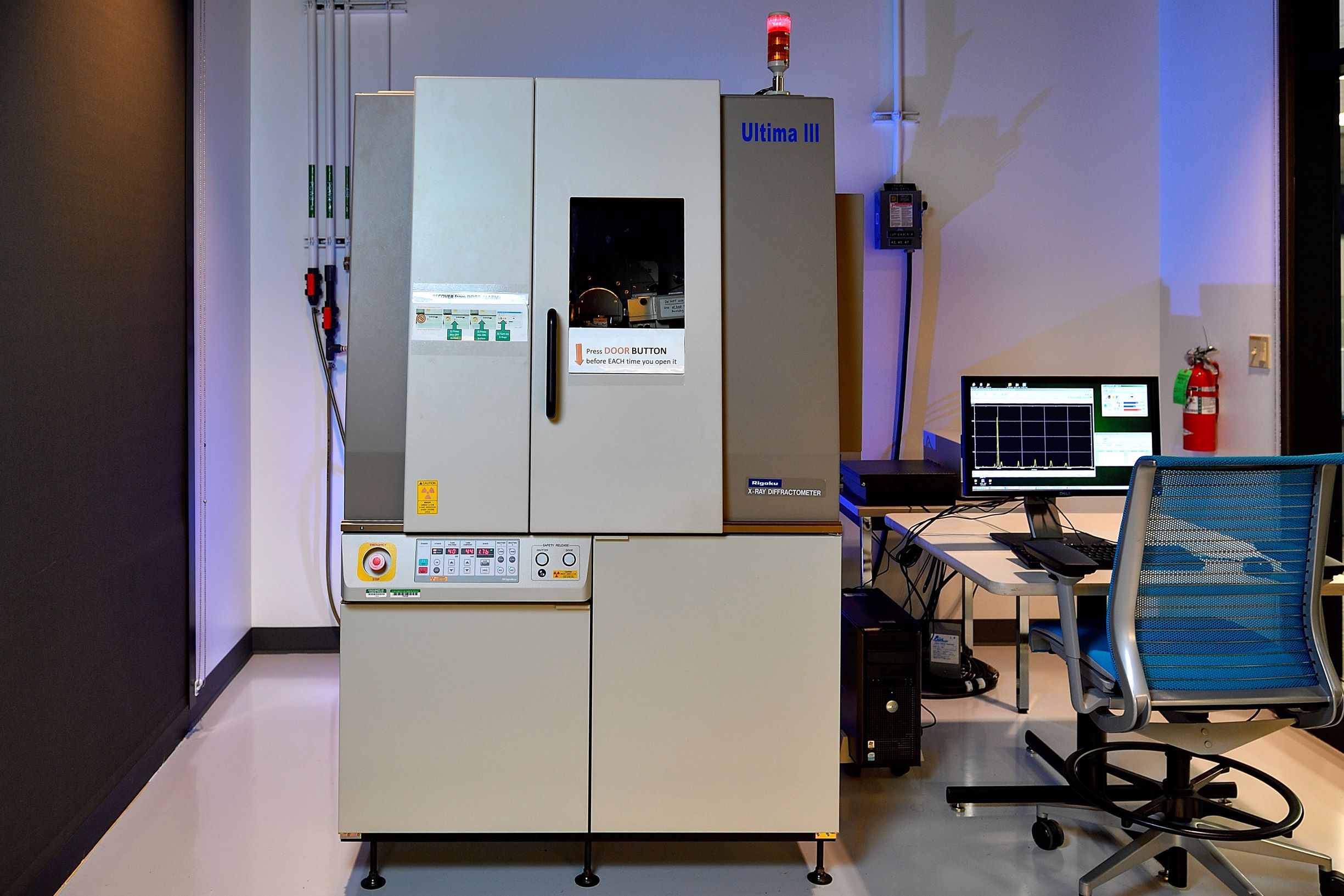 CURRENTLY UNAVAILABLE
CURRENTLY UNAVAILABLE
A new high resolution XRD was acquired in 2006. The Rigaku Ultima III enables a variety of applications including in-plane and normal geometry phase identification, quantitative analysis, lattice parameter refinement, crystallite size, structure refinement, density, roughness and multilayer thicknesses (from reflectivity geometries), and depth-controlled phase identification.
Detection consists of a computer-controlled scintillation counter or a fast semiconductor-based position sensitive detector.
In addition to standard Bragg geometries, the system is capable of thin film analysis, grazing incidence diffraction, pole figure analysis, transmissive and reflective small-angle x-ray scattering, and reciprocal space mapping. It also has a 1500°C hot stage.
Instrument Specifications
|
X-Ray Generator
|
Monochromators
|
|
Detectors
|
|
|
Goniometer
|
|
|
Attachments
|
|
|
Optics
|
|
|
Software
|